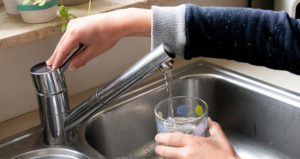Setting the right water price challenges member states

-
 Esther Rasenberg
Esther Rasenberg
Share article:
Water pricing is not so easy. How to combine protection of water resources, cost recovery, and affordability through water pricing? This topic played a central role at the seminar ‘Setting the right Price’ at 4 December 2014 in Brussels, organized by Aqua Publica Europea (APE), the association of public water operators. It turned out, not surprisingly, a difficult question to answer as the situation and strategy vary a great deal across the European member states.
In order to promote a more efficient use of water resources the European Commission calls on member states and stakeholders to increase their efforts to deliver the cost-recovery requirement. The current economic crisis has intensified water access. Water affordability is a growing political concern. APE presented its proposals along with contributions of other speakers.
Full reinvestment of water
APE argues that water pricing can play an important role ‘if coupled with a good governance and place-based approaches’. Furthermore, APE calls for the full reinvestment of all financial resources generated by water management for the improvement of water quality and services, in order to favor investments and to tackle affordability problems.
Creating incentives
Lukasz Latala, policy officer of the European Commission (EC), focused on Article 9 of the Water Framework Directive (WFD) stating that cost recovery of water services should take into consideration environmental and resource costs. Water pricing is mainly about creating adequate incentives for more efficient water use. Some flexibility in the implementation of the Article 9 by individual Member States is needed and possible, he thinks. “The EC recognizes the social impact of water pricing. But above all consumers should be informed about the reasons of sustainable prices, so that the implementation is not stopped halfway by consumers – like what happened in Ireland.”
Leakages
Lynn Boylan, Irish member of the European Parliament and rapporteur of the Right2Water initiative, protested. She explained that the Irish civilians understand why water pricing is necessary. “But the adaptation by the Irish government, that invested millions on installing meters without fixing the considerable leakages in the water infrastructure is the main problem.”
Introducing the-polluters-pays principle is specifically a challenge to the agricultural sector, Latala stated. The EC is considering extra legal requirements, like irrigation conditions, Eco labels and other green criteria. In general, a lack of transparency in the way water pricing is adapted across Europe is a handicap for a proper implementation of the Article 9.
Not free of charge
“We need the debate with consumers. Water shouldn’t be close to free of charge. We have to be very careful with that,” Gorm Dige of EEA (European Environment Agency) argued. Water pricing can provide incentives for reducing household water use. At the Czech republic, water use was reduced by 40 %, after the government had increased the tariff for households on water use and wastewater discharge. In Denmark between 1993-2004 the ‘real price’ of water (including environmental taxes) increased by 54 %. This has led to a substantial decrease in urban water demand from 155 to 125 litres per person per day. However, price elasticity regarding water demand seems to be low. At least rates or rules for calculation should be fixed in a transparent way, stated Dige.
Reforms in Scotland
A successful example of reforming water treatment and infrastructure is Scotland, presented by Jon Rathjen of the Water Industry Team of the Scottish government. Seventy percent of all UK surface water is located in Scotland; water shortage has never been an issue in the so-called ‘hydronation’. In 1996 three regional water authorities were set up. These bodies are operating separately because they served very different areas, different population types and had very different challenges. They came up with different charges as well.
A big challenge was to improve environmental standards. Pollution of surface waters required massive investment in treatment installations. One solution was a private financed investment (PFI). A major investment through PFI in the sewage systems in Scotland took place in the late 1990s. Rathjen explained that since the recent reforms service costs have been reduced by 40 % between 2002 and 2010. Leakage was nearly reduced by 50 per cent since 2006. Environmental issues were reduced by 34 %. Nowadays households get lower water treatment bills then they would have had without the reforms – thanks to lower operation costs and improved planning and procurement of capital investment
More information: ‘Setting the right Price’
















